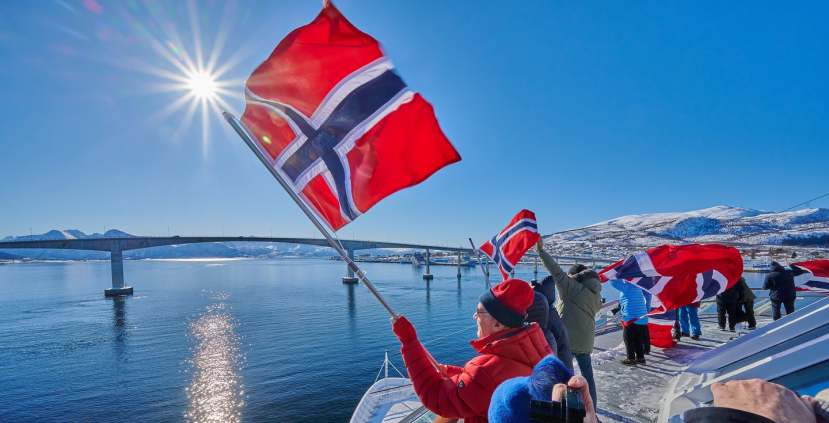
Norwegian cruise liner Havila Voyages have announced plans to extend their emission-free sailings. They are currently able to sail in that fashion for four hours using battery packs. Their aim now is to extend that to 12 days later this year. If achieved then, it would be an industry-first.

There is mounting pressure on the cruise industry to decarbonise. It’s recognised that when it comes to the highest-emitting modes of transport, cruise ships are near the top of the list. Data for emissions per passenger kilometre are higher for this mode of transport than for ferries, planes and trains. In 2022, the International Council on Clean Transportation revealed worrying figures for the largest and most efficient cruise ships in the world. Approximately 250 grams of carbon dioxide per passenger kilometre was being used.

That’s compared to around 80 grams for long haul flights, 41 grams for a national rail service and 19 grams for ferries. Those worrying figures have led to a call from governments, lobby groups and also passengers to see the industry become more environmentally-friendly. In reaction to this Havila Voyages are now working with marine technology provider HAV Group as they bid to achieve this target. The target is for their roundtrip from Bergen to Kirkenes to be climate neutral, a distance of 9,260 kilometres. They have set themselves a target of not just providing their customers with an exceptional cruise experience but one that is the most environmentally friendly service on the Norwegian coast.

Their belief is that their guests should be able to experience the natural beauty that Norway possesses. At the same time, the cruise ship they are travelling on should not harm that beauty and the impact on the environment should be minimized. Therefore, their vision is to, according to Locals Insider travel magazine “revolutionise coastal travel and contribute to a more sustainable industry for us and generations to come.”
In 2023, the MSC Euribia completed a climate-neutral sailing that travelled from St Nazaire to Copenhagen. That was a five-night journey. To be able to complete a 12-day trip, Havila Voyages plan on using larger battery packs in addition to biogas which is a renewable fuel that is derived from organic waste.

What exactly does climate neutral mean? Well, it sees the ship able to offset or balance the total greenhouse gas emissions used during a voyage. If the ship is emission-free, then that means there are no emissions at all used. The annual Arendalsuka political and social conference was held in Norway. Chief executive of Havila Voyages Bent Martini was a speaker at that event. Speaking about the plans for extending their emission-free sailings, he commented that the company is “in the planning phase” Talks are taking place with suppliers “to secure sufficient volumes to be able to fill the tanks 100 per cent with biogas, and we believe we will succeed.” If that was to be so, they would be able to sail over 5,000 nautical miles during the 12-day voyage. This would just be the beginning of their ambitions. Their plan is to operate 12-day coastal route sailings that are emission-free by 2030.

Martini sees this as the company being “a beacon for the green transition in shipping.” He added that: “Technology exists, and the opportunities are there. It’s about the willingness to make the necessary investments.” The chief executive hopes that the Norwegian authorities “are serious about their environmental ambitions.” His belief is that “with strict environmental requirements from the authorities, those who want to operate the coastal route will be forced to deliver.”

There is a push within the cruise ship industry to make ships increasingly environmentally friendly. Viking are working alongside Italian shipyard Fincantier to build Viking Libra. This will be the world’s first hydrogen-powered cruise ship. Its scheduled delivery date is towards the end of next year. The cruise ship will be fitted with a hybrid propulsion system and this will use liquified hydrogen to power a polymer electrolyte membrane fuel cell system. This will produce up to six megawatts of power and that will be sufficient to power smaller ships. It will also allow the cruise ship to access more environmentally sensitive areas and navigate with zero emissions.
Also using a greener form of fuel are two new ships from MSC Cruises. Both World Europa and World America are powered by liquefied natural gas. Due to be launched in five year’s time is a zero-emission cruise ship from Expedition cruise brand Hurtigruten. This will be using a 60-megawatt battery pack for its power.

It can clearly be seen therefore that since the publication of the data three years ago, the cruise ship industry has been working hard to reduce the high figures that were published. Havila Voyages aim to be at the forefront of the positive moves that are being taken.

